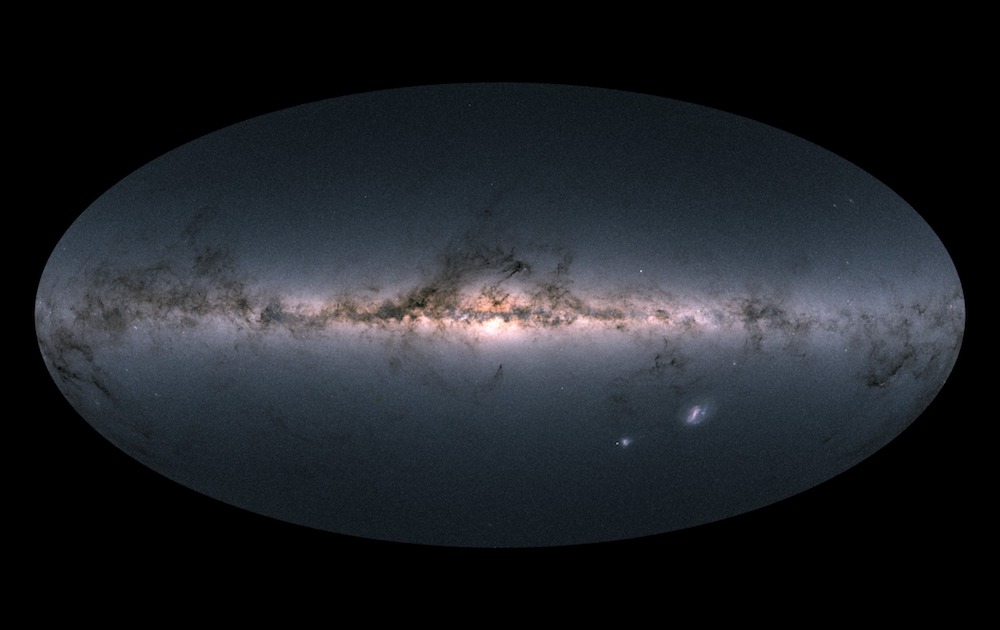Stunning Cosmic Map Shows the Location of 1.7 Billion Stars

An incredbile new map to the cosmos reveals the precise locations of more than 1.7 billion stars in the Milky Way galaxy and some 14,000 objects orbiting our sun. The map takes only a few minutes to access — but it might take a lifetime to understand.
The stunning image was created with a treasure trove of data released today (April 25) from the European Space Agency (ESA). The data was collected by the ESA's Gaia space probe, a 3,000-lb. (1,390 kilograms) spacecraft packed with advanced optical instrumentation. Gaia was launched with an ambitious goal: to create the most detailed and accurate 3D map of the Milky Way galaxy ever constructed. Today's massive data release — which includes hundreds of pictures, videos and documents made open to the public — puts the mission well on its way to achieving that goal. [Stunning Photos of Our Milky Way Galaxy]
The massive star survey also includes fresh information on nearly 14,000 known objects within our own solar system and an interactive 3D map of the stars, which you can float through above.
Gaia launched in 2013 and took up a position roughly 1 million miles (1.6 million kilometers) away from Earth a year later. As Gaia orbited our sun, it looked deep into the galaxy, collecting data on billions of distant stars. The mission's first data release came in 2016, providing detailed information on the precise positions of nearly 2 million stars. Today's release updates the map to include nearly 1.7 billion stars, including movement and distance measurements for nearly all of them.
That's a staggering amount of information — more than enough to fuel a lifetime of space research.
"This is the data we're going to be working on for the rest of my career," Jackie Faherty, an astronomer at the American Museum of Natural History, told NPR.
And yet, it's still only a drop in the cosmic bucket when it comes to understanding our home galaxy. The ESA estimates that there may be more than 100 billion stars in the Milky Way, so today's unfathomable data release represents less than 2 percent of the complete galactic landscape.
Sign up for the Live Science daily newsletter now
Get the world’s most fascinating discoveries delivered straight to your inbox.
Gaia will continue its cosmic mapping mission until at least 2020, with more data releases likely to come in the meantime. Take a look at the complete Gaia archive here.
Originally published on Live Science.

Brandon is the space/physics editor at Live Science. His writing has appeared in The Washington Post, Reader's Digest, CBS.com, the Richard Dawkins Foundation website and other outlets. He holds a bachelor's degree in creative writing from the University of Arizona, with minors in journalism and media arts. He enjoys writing most about space, geoscience and the mysteries of the universe.











